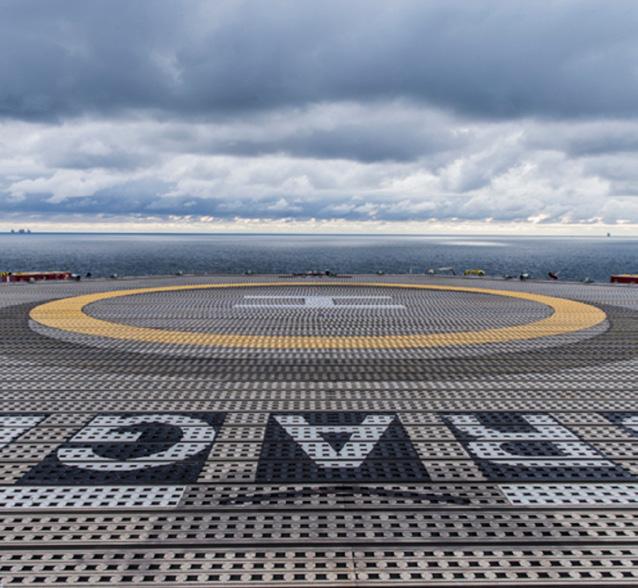
3 minute read
The Brage Unit
LIME PETROLEUM ANNUAL REPORT 2021
(Lime - 33.8434%)
Brage is a one billion bbls (in-place) oilfield in the Norwegian North Sea, located about 130 km west of Bergen in Block 31/4, in close proximity to the giant Oseberg field. After discovery of oil in the Jurassic Fensfjord and Sognefjord Formation sandstone reservoirs in 1980, the well 31/4-7 discovered hydrocarbons also in the Statfjord Formation reservoir in 1984.
Brage was then developed with a fixed eight-leg steel jacket PDQ platform (production, drilling, and living quarter) and 40 well slots at a water depth of about 137 m. First oil was produced in September 1993, initially from Statfjord, Fensfjord, and Sognefjord reservoirs. Later, in 2008, oil was also discovered in the Brent formation which today is the best producing Brage reservoir (3 wells produce +30% of total field production). Normally, Brage has around 100 workers on the platform at all times. WintershallDea has been the Operator since it took over the Brage licence share from Equinor in 2012. The Brage Unit licences (PL 053 B, PL 055, PL 185, PL 055 B, and PL 055 D) will expire in 2030.
Brage is a mature oil field producing at its tail-end from 1820 active oil wells and injecting water in 4 wells. Water cut is high between 90-99%. At YE2021 the field had produced 378 mmbbls oil (402 mmboe). The average oil recovery factor is 40% and varies between 20-60% for the four producing reservoirs. Due to the large in-place volumes and with multiple reservoirs, there is still a lot of potential for improving oil recovery by drilling infill wells, in particular the Fensfjord reservoir where the oil recovery factor is only around 30%. The drilling rig and systems were upgraded in 2012 and are currently drilling 3-4 new wells successfully per year at a total cost of around 1 billion NOK. Each infill well adds between 0.7-1.5 mmboe gross reserves. The current end of field life is 2030 which is when the Brage Unit Licence expires. Drilling operations on Brage were restarted in April 2021 after a stop due to the Covid-19 situation developing from March 2019. As a result, only two infill wells were drilled and completed in 2021. One of the producers also included a sidetrack exploration well proving new reserves in an unproven Brent segment (Talisker). The plan is to continue drilling infill wells without further drilling breaks until around 2026. Drilling performance has been very good in 2021 and 43 days ahead of schedule. Brage has further exploration targets within the license boundaries. Brage South exploration well will be drilled Q3 2022 from the platform, and further exploration targets are under consideration.
During Q4 2021 the Licence partners decided to initiate the BCR (Brage Climate Response) project to significantly reduce the emission of CO2. A floating wind concept is recommended to be further matured. This concept includes semisubmersible units with offshore wind turbines, energy storage, transformers, power management systems, and mooring systems with subsea power cables tied into Brage. The project will also apply for ENOVA funds which will help reduce Capex further. The project schedule is fast-tracked with a target DG4 completion by Q42024 when the windmills will be in full operation. The strategic driver for the BCR project is that the reduction in CO2 and NOx related taxes will be a pre-requisite for applying for a new lifetime extension beyond 2030. Lifetime could potentially be extended to 2040 depending on the success of the upcoming infill and exploration drilling campaigns and a positive decision to execute the BCR project.
Heliport Brage




